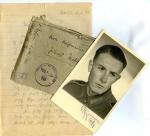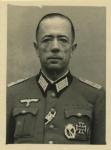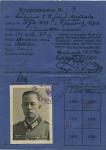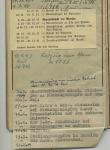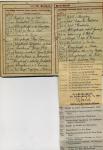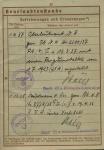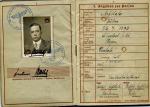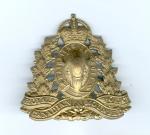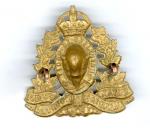-
Posts
5,391 -
Joined
-
Last visited
-
Days Won
4
Content Type
Profiles
Forums
Blogs
Gallery
Events
Store
Everything posted by Gordon Williamson
-

Kriegsmarine HSK Orion Documents
Gordon Williamson replied to Martin W's topic in Wehrmacht Medals, Decorations & Awards
Superb Martin, how many HSK documents do you have now. You seem to be cornering the market ! -
Haven't seen this particular badge before, but sadly Högel's excellent book is nowhere near complete. Jak Mallmann Showell told me the U-Boat Archive has any number of albums donated by former U-Boat men which show many crew badges being worn which are not covered in the book. The limited manpower resources of the Archive ( which is run by volunteers only) means that all these badges are unlikely to be catalogued any time soon.
-
Eric, Sorry to say, but the badge is a definite fake. Originals were never made in real silver or silver plated Bronze but only ever in zinc, with the appropriate Bronze or Silver coloured finish. The biggest obvious give away on the badge is the flat metal retaining clip, a type widely used on fakes. Originals usually had a round wire retaining clip crimped into the back face of the badge though a flat wire variant existed, it was of a totally different design to the type on this badge. The general quality of the finish suggests a casting probably made using an original as a "master". The pin is also incorrect, this type should always have a fluted flat metal pin as shown below. Here are examples of both original fitting types in silver. Note that even the flat type is crimped into the reverse face, not just soldered on.
-
MIke, No worries, it looks like a perfectly good original piece. There are three distinct weave patterns known, this being by far the most commonly encountered. Prices vary quite wildly on these. I got one just over a year ago from a UK dealer for £300 and one off EBay for £200, but I have seen them on some of the bigger dealer's sites for £500+. I would certainly say at least £300
-

Kriegsmarine HK Thor in Japan.
Gordon Williamson replied to Martin W's topic in Wehrmacht Medals, Decorations & Awards
Super photos Martin. With the quality of material you have been picking up and the rate you've been acquiring it, you should consider producing a book on the subject at some point ! -

Kriegsmarine U-985 Cap Badge
Gordon Williamson replied to Hugh W. Brock's topic in Wehrmacht Medals, Decorations & Awards
Hi Peter, Already been in touch with Hugh to get the images posted. Will add them to Hugh's post as soon as they arrive. -

Kriegsmarine GWL U-boat badge opinions
Gordon Williamson replied to John R's topic in Wehrmacht Medals, Decorations & Awards
Interesting, but somewhat strange. Normally, a casting in Zinc will shrink by approximately 5% as it cools, so if a mold had been made using an original as the master, one would expect the resultant casting to measure something like (with the actual weights of the piece in question in brackets) W - 48.9 shrunk to 46.46 (47.00) H - 39.3 shrunk to 37.33 (38.3) Certainly, its a little smaller than known originals, but not so small as one would expect a fake casting to be. Very strange, but certainly enough to make this one to be wary of. -
According to the original order creating the GFP, its main tasks were defined as 1. To investigate all threats to the state, especially espionage and treasonous activities and to combat sabotage and hostile propaganda 2. To collect and evaluate evidence, and the results of investigations undertaken. 3. To supervise the implementation of counter-measures for the protection of operational areas and provide support and advice to the military Staffs. I would say that there is every likelihood that they would indeed have been involved in the investigation of the booby traps etc. One of their main tasks when moving into an area that had just been occupied was to search all official buildings such as barracks etc looking for documents which might contain useful intelligence. They were even responsible to checking mail sorting offices (and even post boxes !) and looking through letters for any useful intelligence, searching for radio transmitters and other means of communication (courier pigeons etc), so for the initial period after an area was captured they would be fully occupied with this kind of stuff plus as you mentioned investigation of the booby traps, sabotage etc. I doubt if they would have had time for any direct involvement in Babi Yar during this period but I suppose we couldn't absolutely rule it out. I working my way to compiling a complete Order of Battle for the GFP, cross referencing from the lists of existing Feldpost numbers but it's a long drawn out process.
-

Kriegsmarine GWL U-boat badge opinions
Gordon Williamson replied to John R's topic in Wehrmacht Medals, Decorations & Awards
I tend to think that it is indeed just a mediocre quality late war piece, but genuine. The casting flaws around the edge are not all that unusual on late war castings like this. -
Indeed ! 24 seperate entries for actions in WW1. Strangely, although there was a separate hand written note tucked into the rear cover which was obviously a memo for the Company Clerk indicating entries to be written into the book ( the same hand writing as the actual entries themselves), there is a 1938 entry for "Einsatz Östereich" but no entry for the Anschluss Medal. So, the Clerk still missed some stuff. There is an entry for the MVO 4 m. Schw. obviously from his time with 7 Bavarian Infanterie Regiment, and then P.E.K. 2 which I assume is for the EK2 with the "P" for Prussian. First time I have seen the EK specified as Prussian. Then an entry for Österr. M.V.K. 3 m. Kr. D. which I take to be the Austrian MVK with "Kriegsdekoration". Certainly a guy who "did his bit".
-

KC KVK without swords
Gordon Williamson replied to stukapilot's topic in State, Civil Awards & Decorations
Yes, I'd say it looks like an early one. I have seen a small number of early Deschler pieces which don't have the "1" maker mark.




